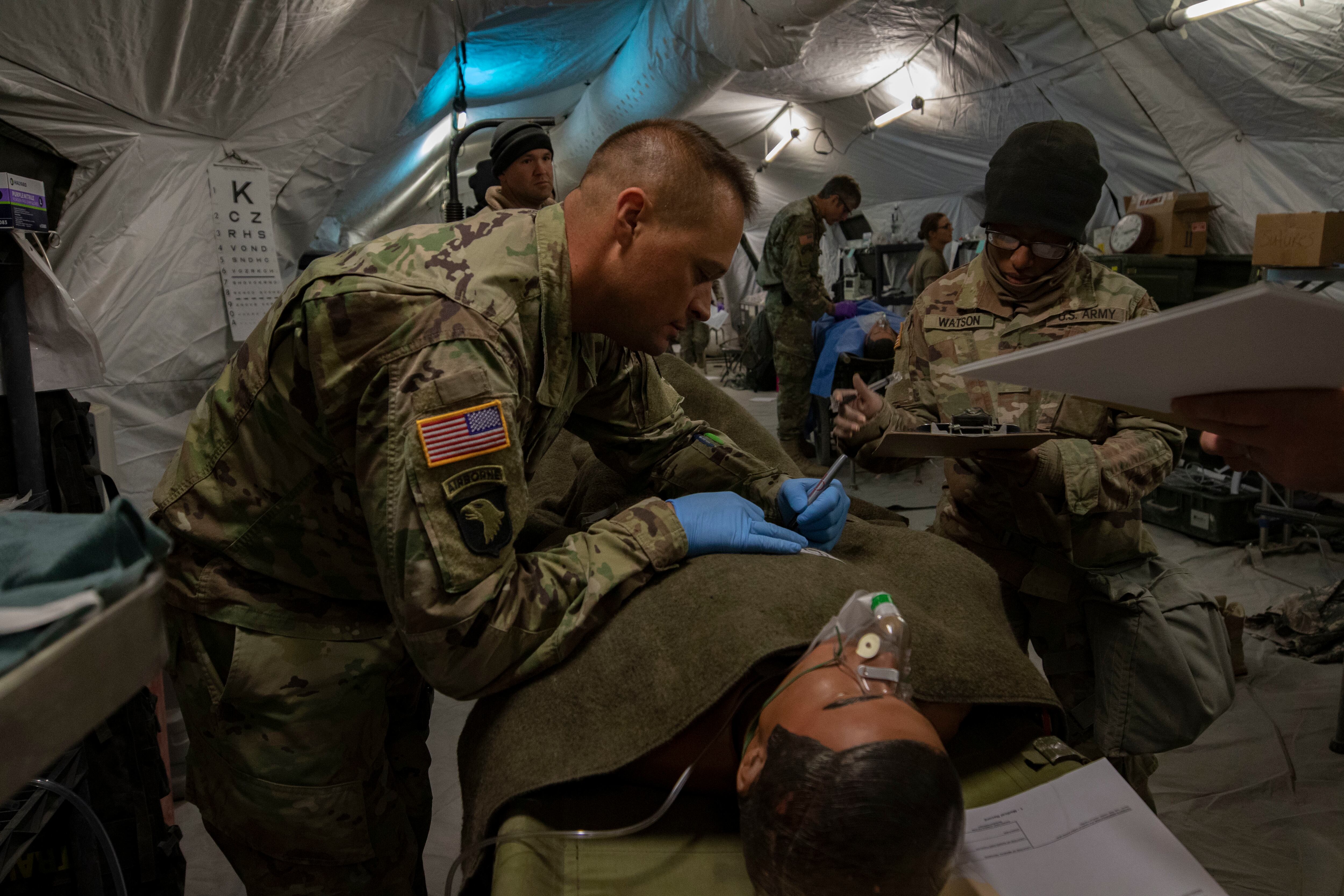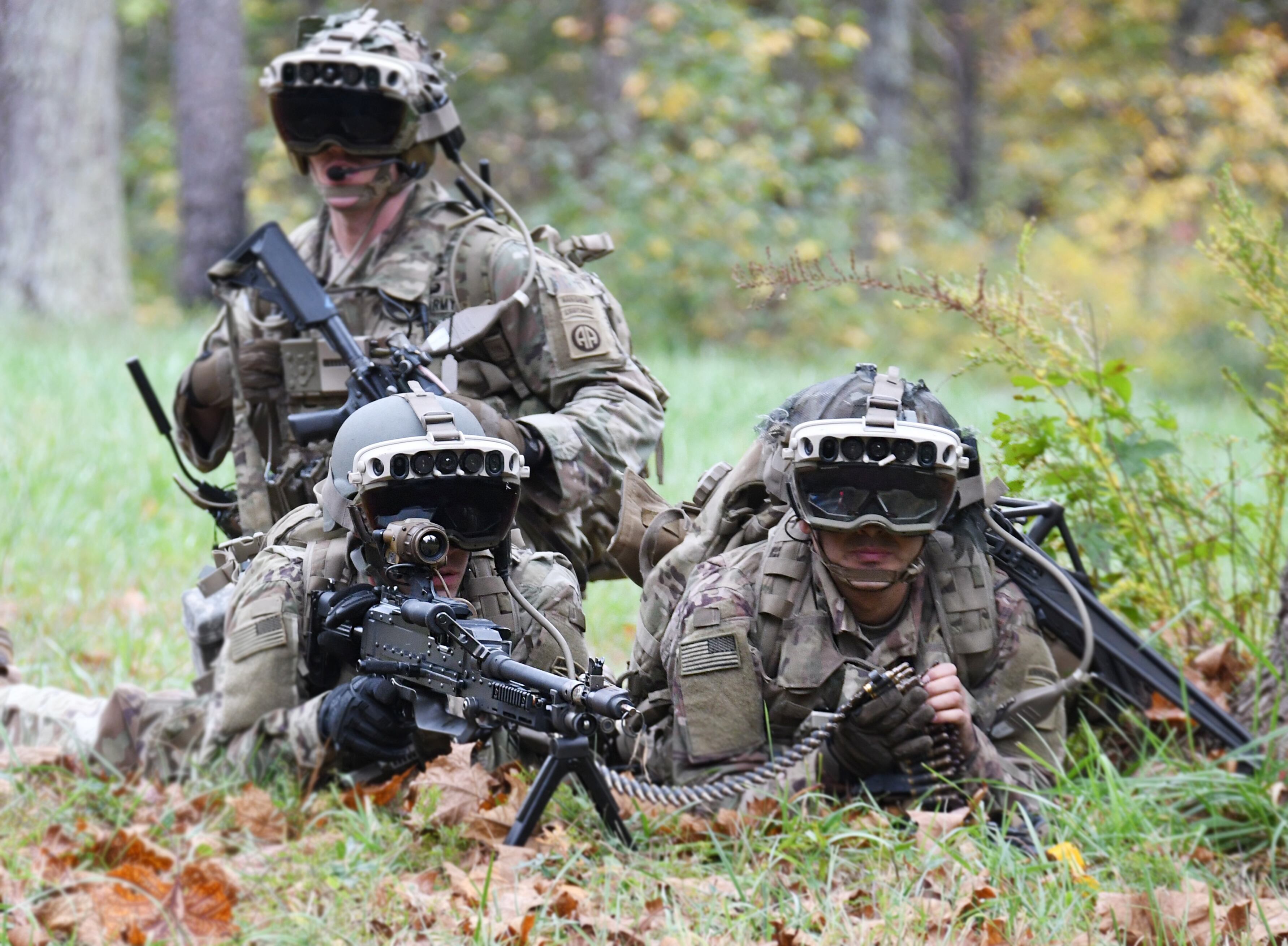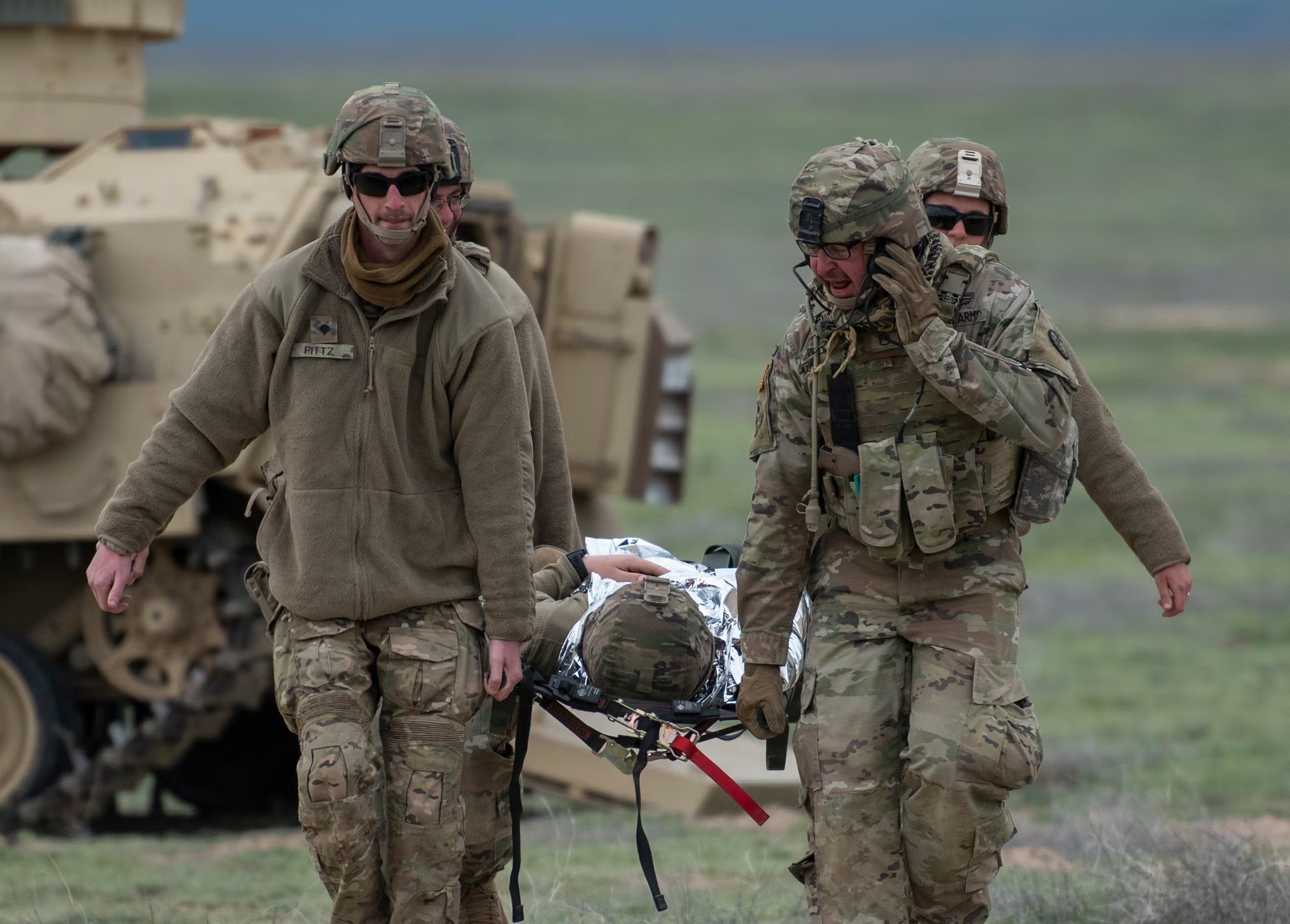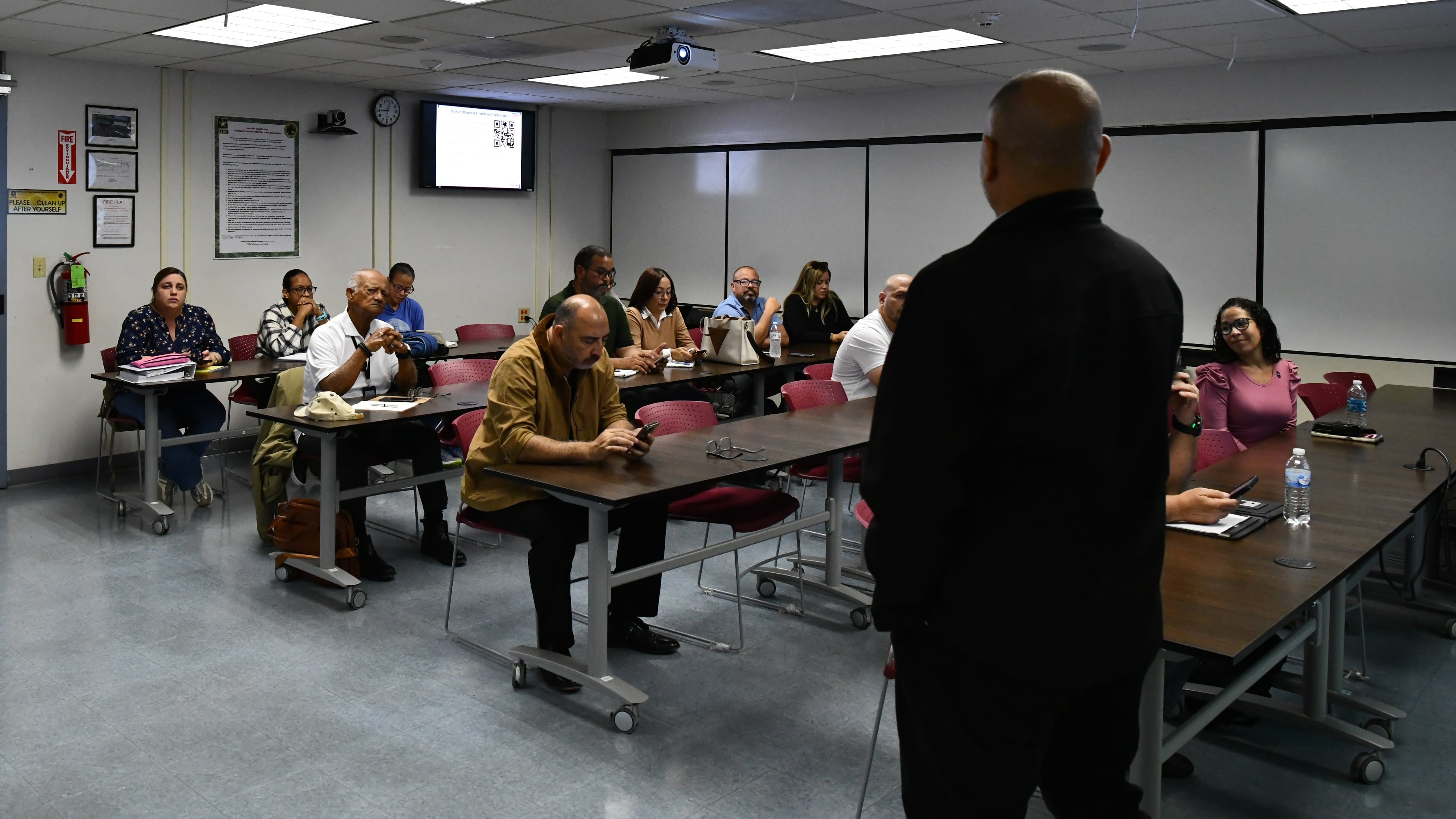WASHINGTON — As the Army modernizes for large-scale, high-casualty combat, its medical branch must keep up with the pace of battle.
Army medical leaders have three main tasks: get wounded soldiers back in the fight, clear the battlefield of resource-intensive casualties and get medical resources to the frontlines amid contested logistics from fort to port.
How they get there, top officers explained Tuesday at the annual Association of the U.S. Army conference will require technologies not yet invented and a series of experiments that started this year and will run over the next two years.
Col. James Jones, director of medical capability development and integration at Army Futures Command, painted a picture of what future commanders will face.
“We’re going to need autonomous resupply, autonomous systems, AI-enabled to optimize evacuation and maximize return to duty rates,” Jones said.
In the scenario Jones shared during the panel on Army medicine in multidomain operations, 1st Armored Division is in the fight, running defensive maneuvers.
They’re hit by an enemy precision strike attack with long-range rockets and self-propelled artillery. The division takes 500 critical casualties.
In this 2030 scenario, Jones explained, a combination of pre-battle work and technology is now being developed to serve medics and surgeons.
Each vehicle is equipped with casualty evacuation kits, all non-medical troops have received advanced Tactical Combat Casualty Care training and autonomous robotic ground and air systems are moving the wounded off the battlefield.
Medics in the field and surgeons in the rear, or as far away as Walter Reed National Military Medical Center, are advising treatment through telemedicine.
“When you look at just the dispersion of our formations in the future operating environment, we can’t get a surgeon to every place where there’s an injury. You can’t get them in the foxhole,” said Maj. Gen. Michael Talley, commander of the Army Medical Center of Excellence.

As this flurry of activity moves across the battlefield, all the data is being swept into an artificial intelligence-driven system that gives commanders minute-by-minute updates. That same system tells commanders what medical supplies they need, as well as when and where they need them.
Information both from the front lines and from pre-operation planning is key to successful treatment.
“You can’t do contested logistics if you don’t know what you’re treating,” said Brig. Gen. Tony McQueen, commanding general of the Army’s Medical Research and Development Command.
The system, McQueen said, will automatically detect what medical product soldiers are using and begin replenishing those stocks as they’re used and flow more material to the front line.
To get to that demanding but necessary future for Army medicine, officials stressed that medicine, even seemingly simply tasks like rehearsing casualty evacuations in every exercise, will be necessary.
That’s why Army medicine has embedded experts into a series of standard Army and joint exercises, starting this year. They’re also kicking off some of their own, medicine-focused experimentation to find out what works and what doesn’t.
Over the next two years, there are plans for a mass casualty evacuation simulation exercise, prolonged care experiments and arctic medicine experiments, Jones said.
Increasingly, Army medics and battlefield surgeons are expected to rely on a cloud-based system to store and transmit medical data. That information will be pulled from soldier-worn sensors and aerial drone scans of battle-damaged areas and then sent back to experts in the United States.
Talley shared another scenario in which a combat medic on the battlefield could use the network and, while wearing the Army’s mixed reality goggle — known as Integrated Visual Augmentation System — have a surgeon at Walter Reed talk them through a difficult procedure, such as cutting open a soldier’s abdomen to treat internal wounds.

That surgeon would see and be able to guide the medic with augmented reality tools that the soldier can see overlaid on the patient. Tasks like that will require a higher level of training for future combat medics and a robust network to support such data sharing.
Those medics must be able to triage patients quickly and provide advanced medical care in the fight, while also sometimes sustaining the patients with prolonged care that wasn’t the norm in recent wars.
Getting the wounded out of combat and back to advanced treatment won’t be as easy as it has been in Iraq and Afghanistan. Air evacuation will be contested and sometimes soldiers will have to rely on ground systems or be forced to wait, keeping patients alive longer.
And the Army doesn’t want to tie up its limited number of human pilots or drivers in dangerous recovery missions. They’re going to lean on robot ground and air vehicles to pull wounded from combat.
“We’re looking at all kinds of evacuation platforms that we don’t have today that we will have in the future,” Jones said.
Army Times recently reported on work being done at the Maneuver Battle Lab at Fort Benning, Georgia, that has demonstrated an autonomous aerial drone carrying a 70-pound mannequin over 2.5 miles in under four minutes.
Also, at AUSA this week, one of the xTechSearch competition winners, a program that seeks out tech solutions from small businesses, displayed a “smart shirt for wound detection.” The shirt features a woven lattice of sensors inside a combat shirt or jacket that can instantly report a puncture over 2 mm in width.
The company developing the shirt, Legionarius, is adding “bladders” to the shirt that could immediately compress wounds to staunch bleeding.
Todd South has written about crime, courts, government and the military for multiple publications since 2004 and was named a 2014 Pulitzer finalist for a co-written project on witness intimidation. Todd is a Marine veteran of the Iraq War.





